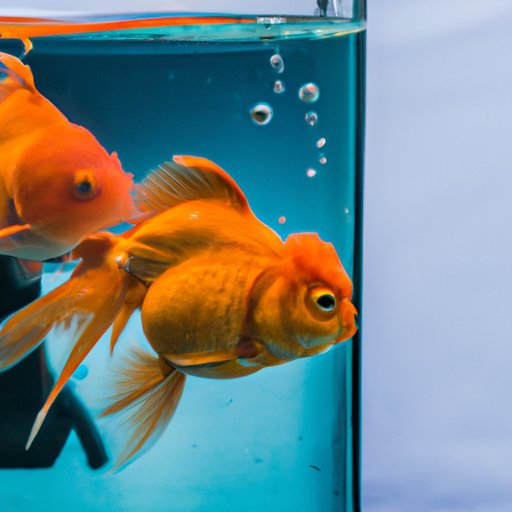Introduction
Goldfish care is an important part of having a successful aquarium. Taking the time to research the proper tank and water conditions, feed your goldfish the right diet and amounts, test the water regularly, clean the tank and replace the filter media, monitor your goldfish for signs of illness, and provide enrichment activities are all key components of keeping a healthy and happy goldfish. This article will provide an overview of each of these topics so that you can create the best possible environment for your goldfish.

Research the Proper Tank and Water Conditions for a Goldfish
The first step in setting up your goldfish tank is researching the proper size and shape of tank for your fish. Generally speaking, larger tanks are better since they provide more space for your fish to swim around, as well as more room for beneficial bacteria to grow. Additionally, longer tanks are better than taller tanks since goldfish tend to swim horizontally rather than vertically. Once you have determined the size of your tank, the next step is to research the optimal temperature, pH, and hardness levels for your goldfish. Generally speaking, goldfish prefer temperatures between 65-72 degrees Fahrenheit, pH levels between 7.0-8.5, and hardness levels between 5-20 dGH. Finally, you will need to research the type of filtration system that works best with your tank size and water conditions. A good filtration system is essential for removing debris and excess waste from the water, as well as providing oxygenation and circulation.
Feed Your Goldfish the Right Diet and Amounts
Once you have established the proper tank and water conditions, the next step is to research the types of food that are suitable for your goldfish. Goldfish are omnivores, meaning they will eat both plant and animal matter. Some popular foods for goldfish include flakes, pellets, freeze-dried foods, and live or frozen foods such as bloodworms, brine shrimp, and tubifex worms. It is important to feed your goldfish the right amount and frequency of food, as overfeeding can lead to increased waste in the tank and health problems for your fish. As a general rule, you should feed your goldfish no more than twice a day and only as much as they can consume in two minutes.
Test the Water Regularly to Ensure it is Clean
Testing the water in your goldfish tank is essential for ensuring that your fish are living in a safe and healthy environment. Testing the water will allow you to detect any changes in the water parameters such as pH, ammonia, nitrite, and nitrate levels. If any of these levels become too high, it can be toxic for your fish. As a general rule, you should test the water in your tank at least once a week. If you notice any changes in the water parameters, you should test it more frequently until the issue is resolved.

Regularly Clean the Tank and Replace the Filter Media
Cleaning the tank is also an important part of goldfish care. The frequency of cleaning will depend on the size of your tank and the number of fish you have, but generally speaking, you should aim to clean your tank at least once a month. When cleaning the tank, it is important to remove all debris, uneaten food, and dead plants from the tank, as well as replacing any filter media that has become clogged or dirty. Additionally, it is important to rinse out any decorations or gravel in the tank to remove any built-up waste or algae.
Monitor your Goldfish for Signs of Illness and Treat if Necessary
Monitoring your goldfish for signs of illness is also an important part of goldfish care. Common symptoms of illness include loss of appetite, lethargy, discolored fins or scales, cloudy eyes, or white spots on the body. If you notice any of these symptoms, it is important to take action immediately. Depending on the severity of the illness, you may be able to treat it at home with medications or by making changes to the water parameters. If the illness is severe or does not improve with treatment, it is important to seek professional help from a veterinarian.

Provide Enrichment Activities for Your Goldfish
Finally, providing enrichment activities for your goldfish is an important part of their overall care. Enrichment activities can include providing decorations or hiding places in the tank, rearranging the tank periodically, or providing toys for your fish to interact with. Not only do enrichment activities provide mental stimulation for your fish, they also give them something to do when they’re feeling bored or stressed. When providing enrichment activities, it is important to keep safety in mind and make sure that any toys or decorations are fish-safe and won’t harm your fish.
Conclusion
Taking care of a goldfish takes time and patience, but the reward of watching your fish thrive in their new environment is worth the effort. By following the steps outlined in this article, you can create the perfect environment for your goldfish and ensure that they are living in a healthy and stress-free environment.


